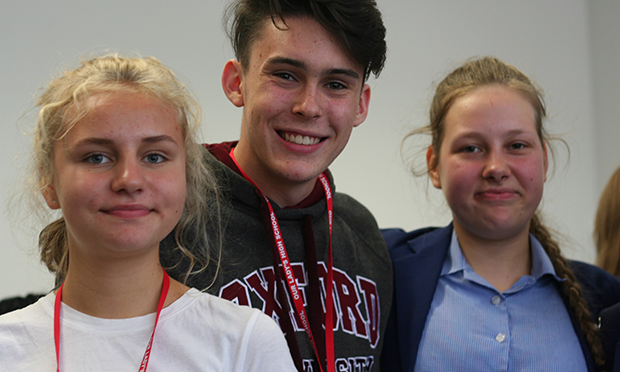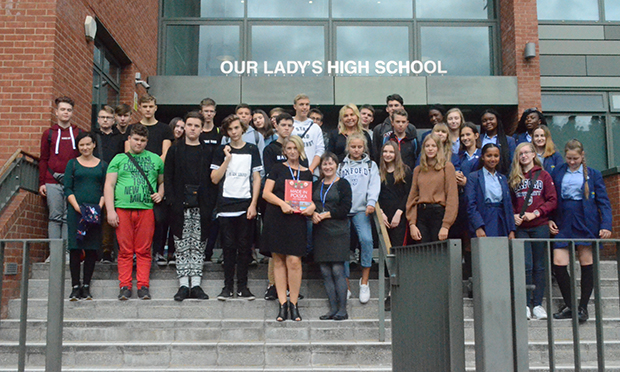Hackney school welcomes 32 Polish students for a day

Common language: students had a chance to bond over lunch. Photograph: Our Lady’s
A school in Hackney this month invited thirty-two Polish students to join in with lessons for a day as part of a European culture swap.
Our Lady’s, a Catholic girls’ school in Stamford Hill, has teamed up with Europejskie Centrum Młodzieży (ECM) – which translates as the European Youth Centre – in an effort to familiarise youngsters with different cultures.
The scheme also gives local teachers a chance to build relationships with their Polish counterparts.
ECM is a non-profit organisation based in Warsaw which is “eagerly interested in providing students with valuable tools to understand what it is like to live and study in other countries”.
Its work involves setting up trips abroad, and one of those saw a cohort of Polish schoolchildren travel to London to get a taste of English culture.
As part of the trip, the students dropped in at Our Lady’s for a day earlier this month to get a taste of what lessons are like in the UK.
They were welcomed by headteacher Ms McDonald, head of modern languages Ms Robinson and Polish teacher Mrs Kozlowska.
The pupils then participated in various classes alongside pupils from Our Lady’s in order to develop their use of English.

Students and staff pose for a group photo. Photograph: Our Lady’s
The visit culminated in a session during which both sets of pupils had an opportunity to discuss and share ideas over lunch.
Our Lady’s student Loraine said: “We enjoyed meeting the students from Poland and putting into practice all the language lessons we have been having in Polish. It has made me want to learn new languages.”
The school specialises in linguistics and holds evening classes, for external students as well as its own, in Polish, Portuguese, Turkish, Spanish and Italian.
Ms McDonald said: “As a school we want to pursue excellence in all aspects of a student’s life – as learners, as linguists, as Europeans, as members of a global community.
“Working with partner schools and organisations, such as the European Youth Centre, enables our students to explore and develop their linguistic and cultural sides, and helps them to become language and cultural leaders.”
